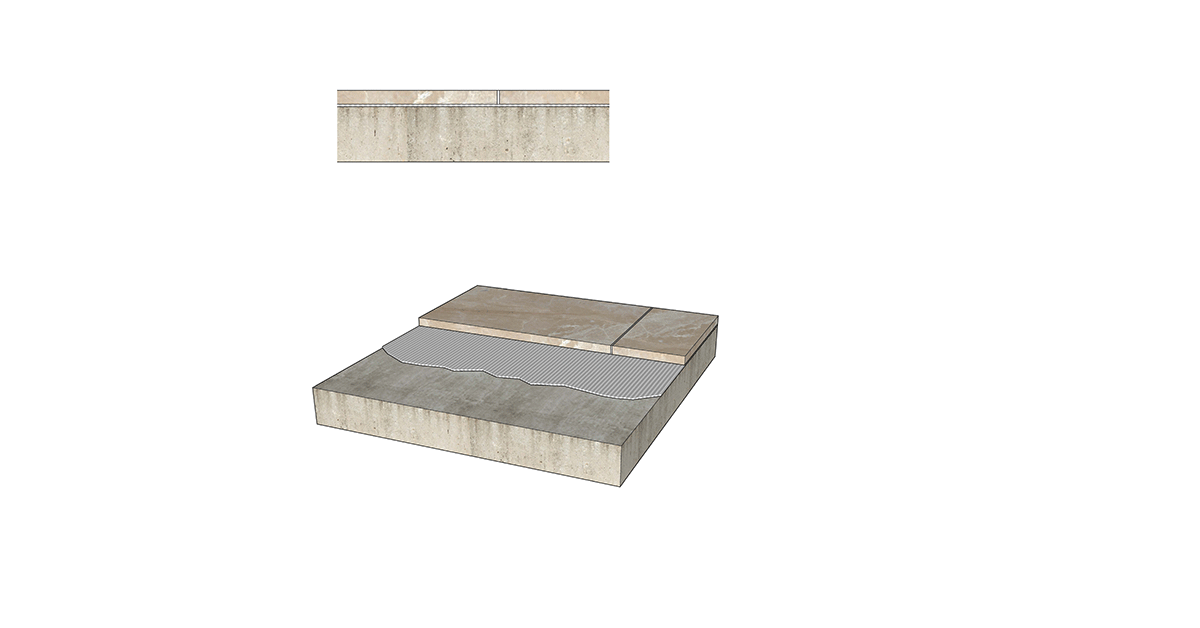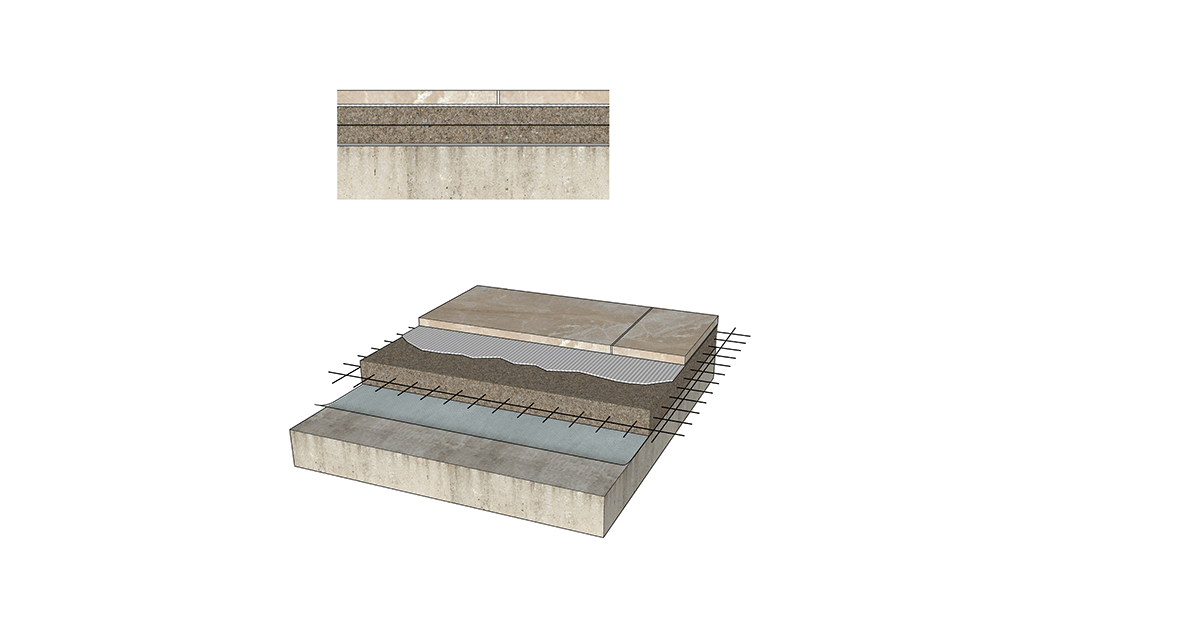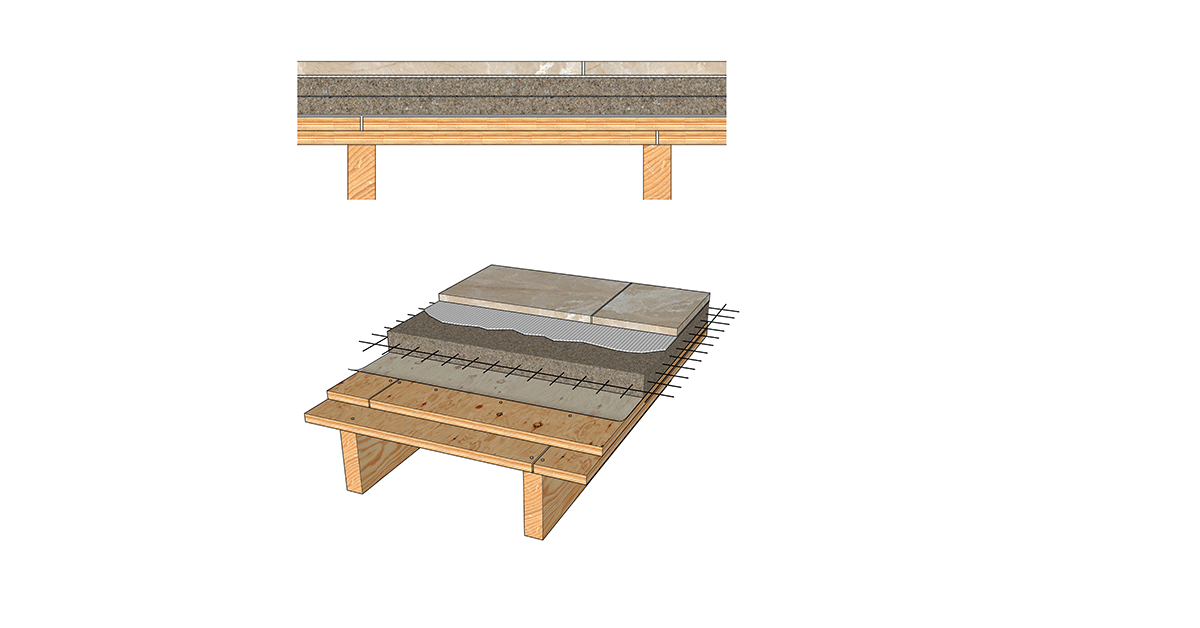Aesthetics
With the extensive variety of stone available domestically and internationally, the opportunities for a unique aesthetic are endless. Marble, granite, limestone, travertine, onyx, and quartz are the most common stone types used. Color, texture, translucence, natural veining, and pairing different types together impacts the overall appearance and feeling of an interior space. The aesthetic can be further manipulated through a stone panel or slab’s finish, whether it be polished, honed, abrasive/grit, thermal, sawn, sanded, or natural cleft.
Appearance of the stone installation can be dramatically affected by lighting. Wall grazing lighting can highlight variation in the stone and its installation and make lippage, warpage, and surface texture appear exaggerated. Indirect wall wash lighting can reduce shadows and minimize differences in the stone surface, making the entire wall appear more even.
Anchored
Stone panels are typically anchored when they are thicker than 3/4 inches or exceed 2 square feet in dimension. Anchored systems are installed with an air cavity between the stone and backup. The panels are stacked, intermittently supported by shelf angles, and individually secured with copper, brass, or stainless-steel wire and plaster or portland cement spots. Today, stainless steel strap anchors, dowels, and cramps are commonly used, and rainscreen rail and fastener systems are gaining popularity for interior applications. Anchorage quantity, spacing, and size are generally determined by stone panel surface area, but can also be affected by loading requirements, panel shape, strength, weight, and anchor capacity. Kerfs and anchor preps that metal anchors engage with should be filled with flexible material that does not expand or stain.
Field Repairs
Qualified installers have the skill and knowledge to repair surface damage that can occur to stone units from time to time during installation. The repairs can take place on-site to minimize impacts on a project’s budget and schedule.
Adhered
Stone panels can be directly adhered to a wall substrate in select circumstances, depending on the weight, overall dimensions, and location of installation. Adhered panels are often installed at the base of wall when the height does not exceed 1 foot. Wall substrate flatness is critical for a successful installation and must fall within a tolerance of 1/8 inch variation in every 10 feet, and not greater than 1/32 inch between each stone panel. Additionally, each panel should be fully back-buttered to achieve 100% adhesive contact between it and the substrate.
Joints and Lippage
Joints between stone units are typically a minimum of 1/16 inches wide and filled with sanded or unsanded cementitious grout or sealant. Joints vary in width depending on overall stone dimensions and surface treatment. Unsanded joint fillers are typically used for narrow joints and stone panels that are softer or have a polished surface. Cementitious grouts can be polymer modified to reduce moisture permeability and increase flexibility. Specialty sealants for wet areas that are mold and bacteria resistant are available. Any material used to fill stone panel joints must be non-staining to avoid discoloration along the joint edges, often referred to as haloing.
Allowable lippage is based on the stone dimensions, surface finish, and installation. For very large panels, joint spacing can be adjusted to minimize lippage.
Abrasion and Slip Resistance
Abrasion resistance and slip resistance are important properties to consider when choosing a type of stone flooring. The amount of foot and equipment traffic, as well as proximity to outdoors, will determine the level of abrasion resistance necessary. Slip resistance is necessary for the safety of building occupants. Slip resistance is evaluated by considering the dynamic coefficient of friction (DCOF), interior environment, building use, and slope of flooring.
Impregnators
Resin impregnators are often applied during fabrication to stone slabs that are later highly polished – most commonly those that are used for counter tops. Resin impregnation aids in the aesthetic uniformity of surface polish by filling all cracks, fissures, and tiny voids in the natural stone.
Impregnating water repellents are a separate class of impregnators applied post-installation and are often referred to inaccurately as “sealers.” Though commonly used, these types of impregnators aren’t needed to protect interior stone surfaces. A building owner may choose to use an impregnating water repellent on a highly porous stone or in areas where the opportunity for water infiltration or staining is high. Any impregnator chosen should be compatible with the specific type of stone present and still allow the stone unit to breathe or transmit moisture vapor. Different types of impregnators are available, but they generally are water or solvent based. Impregnators that increase slip-resistance are also available.
Maintenance
Interior stone is a low-maintenance, robust finish that lasts, especially if cleaned and maintained appropriately over time. Daily dust mopping and vacuuming reduces grit that can act as an abrasive, helping preserve the stone finish. Cleaning up spills, damp mopping, and wiping down stone with warm water prevents deep staining over time. For floors, regular cleaning with a pH neutral stone soap and removing stains with stone poultice reduces the need for more aggressive cleaning or restoration. Abrasive cleaning treatments that damage stone surfaces are inappropriate and can leave stone walls and floors open to accelerated weathering and lower resiliency. Waxing floors is also inadvisable as it can clog stone pores, reduce stone breathability, and surface shine.
Floors and Stairs
Interior stone flooring and stair slabs are used in commercial spaces with moderate to high traffic. Floor slabs are 100% back-buttered with a cementitious bond coat, set in a dry-pack mortar bed, and tamped down until true and level. The dry-pack mortar bed can be bonded or unbonded to the concrete sub-slab. If there is significant differential movement in the sub-slab, the dry-pack mortar bed is typically unbonded, using an isolation membrane, and reinforcement in the center of the bed. Membranes are also commonly used to isolate cracks in the concrete sub-slab, reduce moisture transfer, and when joints in a concrete sub-slab don’t match up with joints in the stone flooring. Stone stair treads and risers are set in a solid mortar setting bed. Depending on the design, some stairs, like cubic or veneered, require copper or stainless-steel anchorage.
Countertops
Stone is used for countertops in both residential and commercial applications because of its inherent durability and scratch/impact resistance. Denser stone like granite is often chosen to resist stains and provide easy maintenance, but other stones, including engineered stone like quartz may be used. Because countertops are required to overhang from their supports, the thickness of the stone slab will vary based on supporting details. Stone approximately 30 mm (1.2 in.) is used for most commercial countertop applications. Countertops are usually fabricated by the stone supplier in the required size and shape as dictated by the design. Edge profiles and surface textures are chosen based on aesthetics, function, and safety. Installation tolerances are similar to walls and must take into consideration drop-in sinks and other features. Adhesives are typically used to attach the countertops to their supports and may require shims in some applications.



